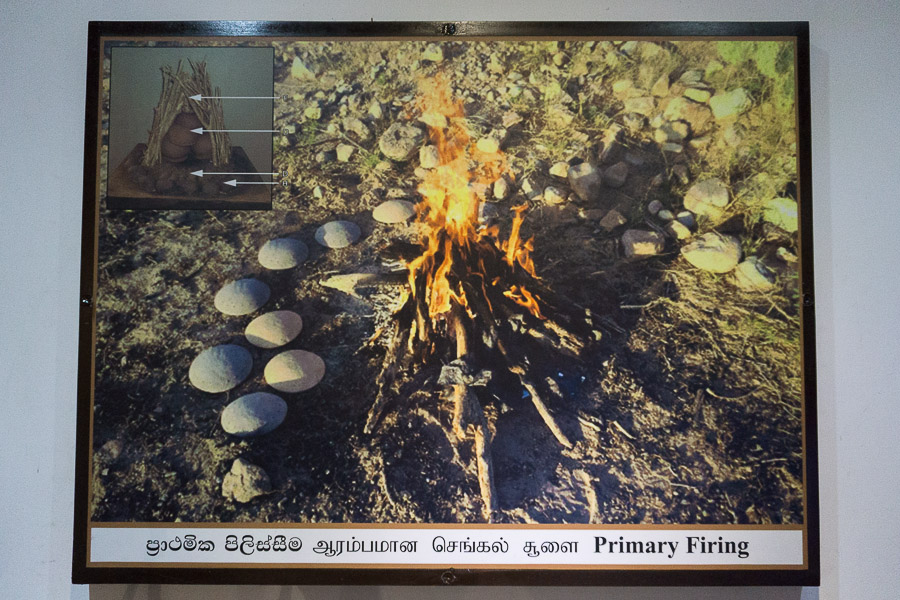We hopped on a local bus from the University straight to Bandarawatte, Biyagama. With a hand drawn map of the route, from the local bus terminus to the Pottery Museum and government run Production and Training Center of Clay Article, we were thankfully able to find this slightly hidden space.
It is located along the Kelani River – a clay rich riverbank that has been home to potter communities for centuries. We had little knowledge of, or expectation from our impromptu visit. Much to our delight we found the museum, albeit very small, packed with valuable information about the traditional pottery methods and techniques of Sri Lanka. Already impressed with the knowledge we had just acquired we casually strolled out of the museum unaware that we were in for an even bigger surprise.
On the opposite side of the compound stood an open studio space. Inside we discovered four women in various stages of production. The women sat on Shimpo wheels that have recently replaced the traditional ‘sakaporuwa’ (wheel), they were all working with a red slip like substance and they were all smiling when we entered.
The eldest, with the cheekiest grin, is Matilda Yasawathi, a 76-year old master potter. She has won numerous awards in her pottery career including the President’s Gold Award. She comes from Weerasekerapura in Biyagama, a village famous for its pottery artisans. She speaks English immaculately. We immediately took to her.
This center is well known for their traditional ‘guru’ pieces: an old decorative art form for domestic utility ware in Sri Lanka. ‘Guru’ was initially described to us as a natural red slip. We discovered that guru is made from rocks, called guru gal collected by the river. These naturally red rocks are in fact ferruginous nodules, which are crushed and mixed with water to create ‘guru’, the red slip.
When the vessels are leather hard they are polished to a shine with bits of plastic on the wheel. Then guru is applied according to the desired design and when it is dry the etching can begin. We watched the women as they etched the intricate and beautiful traditional leafy designs (liya vela) with speed and precision. They work free hand and with no preplanning, leaving no room for error. And they do this with the spokes of broken umbrellas! We were fascinated.
Matilda didn’t wait long to charismatically entice us onto their spare Shimpo. We accepted the challenge and won their hearts with our throwing. They even went so far as to ask us to stay and work – and sincerely we would have had we not prematurely booked return flights to India. Lessons are learnt in many ways and one we certainly learnt that day, on the eve of our departure, was that of patience and perseverance. It takes time and dedication to discover the right places to be and we must be willing to spend that time wholeheartedly.
Ironically the finest clay we have used thus far on our journey happened to be at this center too. We enthusiastically took a tour of their clay-processing unit and learnt that the raw clay is extracted from the Kelani riverbank. It is processed onsite through a ball mill, manual sieving, a filter press and finally a pug mill and then allowed to rest for a few days before use.
We leave Sri Lanka with our hearts full and grateful to all the exceptionally helpful and knowledgeable potters we have encountered. Thank you all immensely for your hospitality and love for ceramics. We feel elated.


























I am planning to visit Biyagama this weekend and came to your blog for a pre-read. Very helpful 🙂
Thanks for mentioning the way and details bcse I was searching a place to see the pottery industry for my daughter.valuable information
It’s our pleasure. I hope your daughter enjoyed her visit.